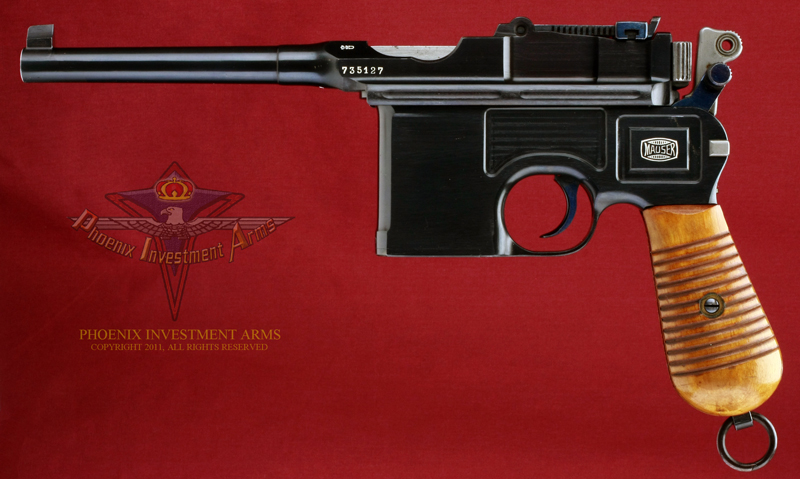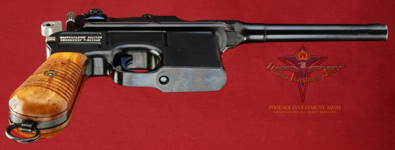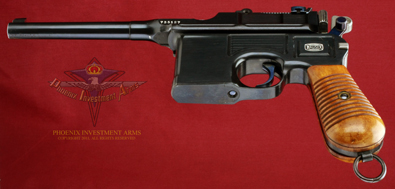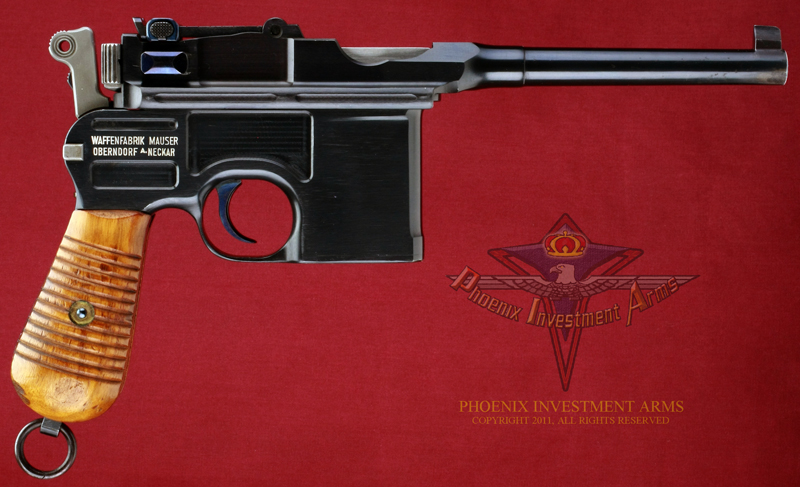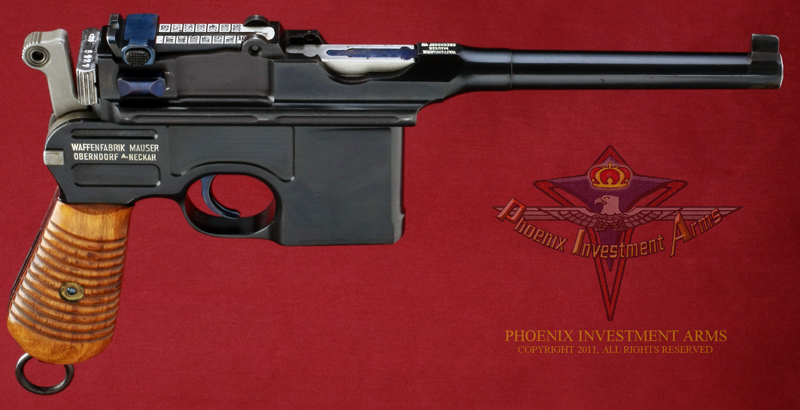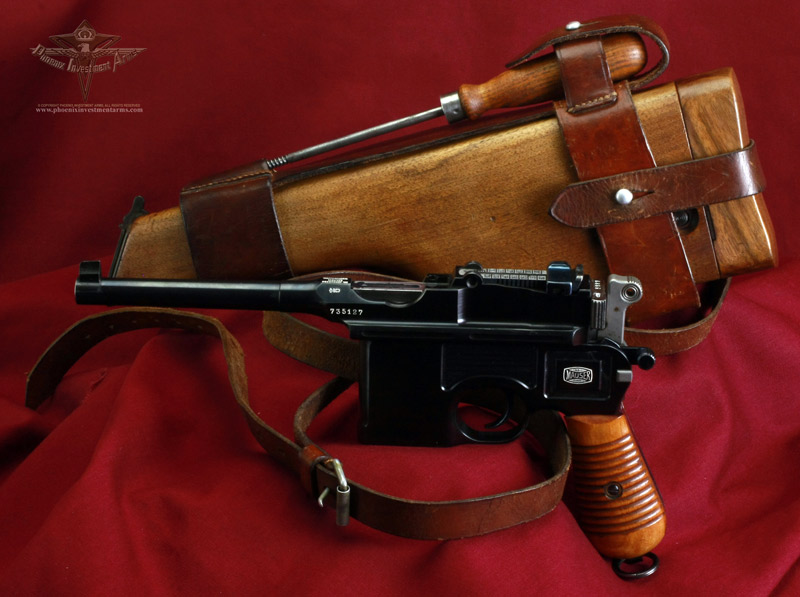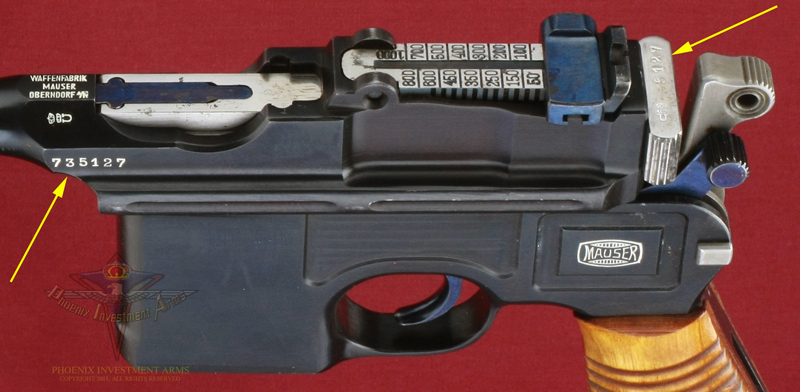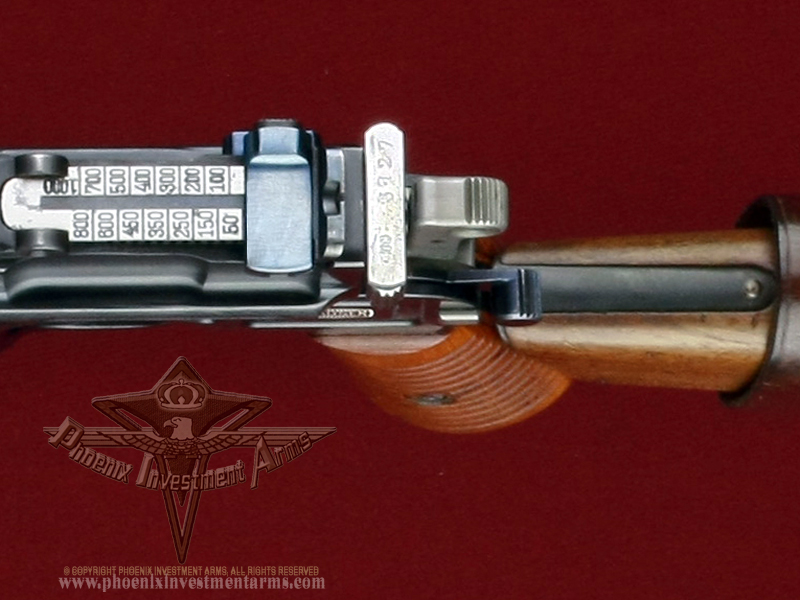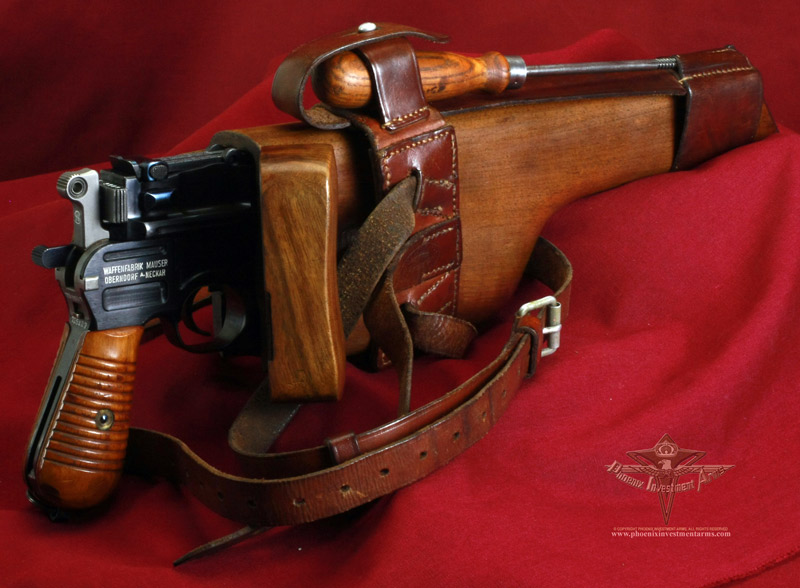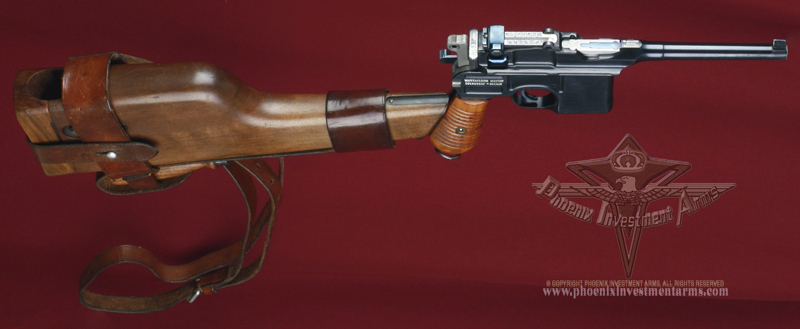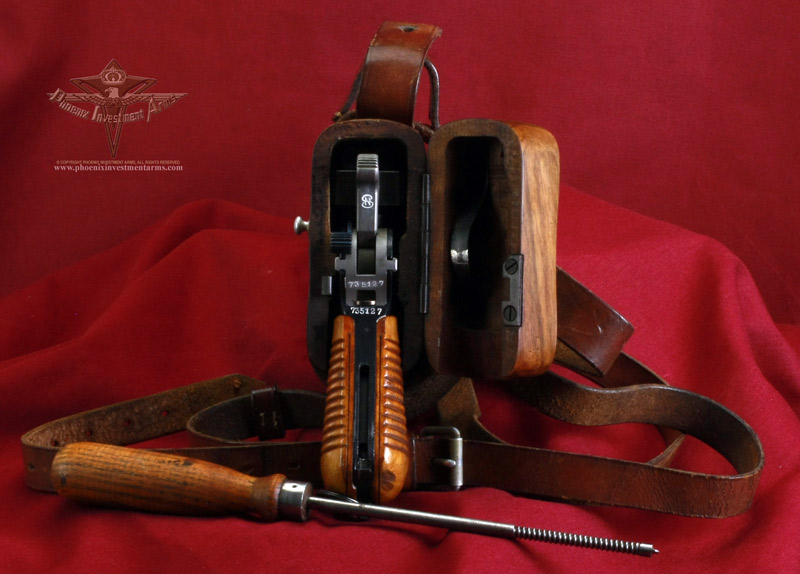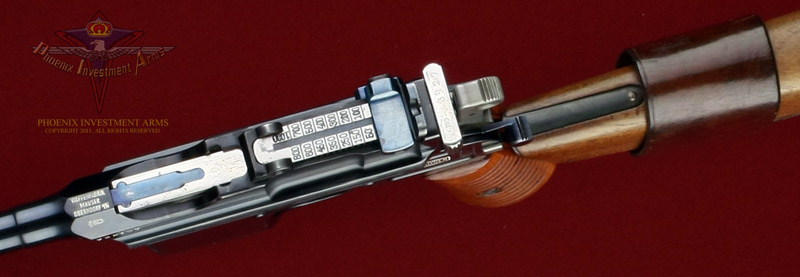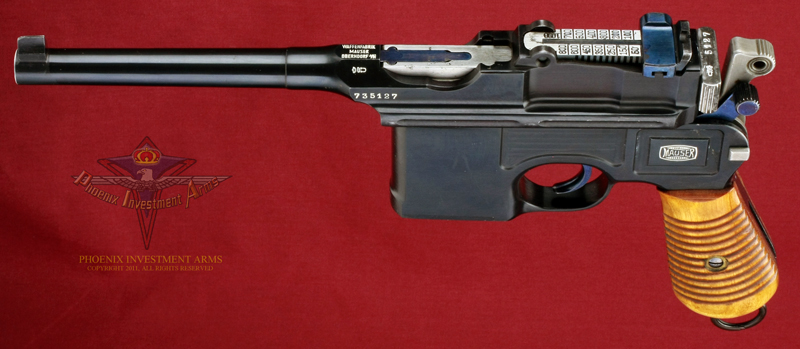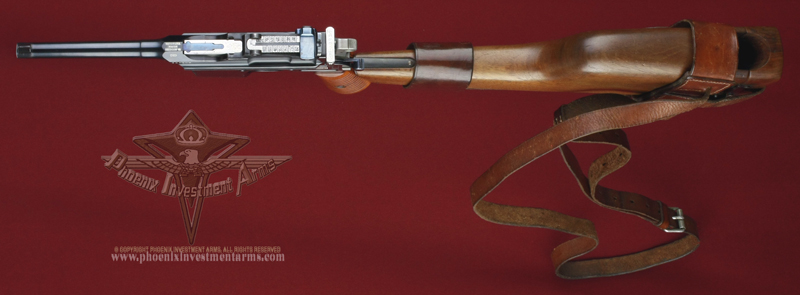During the First
World War C-96 had been acquired by the German
Army due to the shortage of the standard issue Luger
P-08 pistols. It also had been used during the
World War Two, by some second line troops of the
Reichswehr (German Army). C-96 also had been
widely exported - in the 1920s Soviet Russia
purchased large quantities of the short-barreled
(99 mm barrels) C-96s in 7.63mm, giving the name
"Bolo-Mauser" (from Bolsheviks' Mauser) to all
short-barreled C-96s. In 1930s China also
purchased lots of the C-96s in 7.63mm, and also
manufactured copies of the C-96 but chambered
for .45ACP cartridge. Surprisingly, these copies
were of quite good quality. Many C-96 clones
were manufactured in Spain, mostly without any
license, and mostly by
Archived-NOT FOR SALE
1930 Transitional C96 Commercial
Broomhandle
PHOENIX INVESTMENT ARMS -
PREMIUM COLLECTOR LUGERS
Genuine German
Luger - Largest Variety of Lugers Offered
Home | Post WWI DWM | Erfurt Lugers | Mauser | Simson Suhl | Krieghoff | Vickers, Ltd | Swiss Bern | Other Guns
Bottom of Page
 |
| This is an early Transitional 1930's serial #735127, 7.63mm Mauser, 5 1/2" barrel with a fine, bright bore, and the solid rails of the late model. The hammer, bolt, and rear sight slider have all been polished bright. The unnumbered 12 groove wooden grips are in fine condition. The stock is correct and the C96 comes with the complete leather. (1556) |
 |
|
NOTE: Photographs taken today with the high mega-pixel camera show more than we sometimes can see with the human eye. Magnified close-ups show us tool marks and natural surface conditions that one normally doesn't see in the ordinary handling of the weapon. Photographs are copyrighted, all rights reserved, any extraction, reproduction or display of gun pictures without the express consent of the Phoenix Investment Arms is strictly prohibited. Thank you for your cooperation. |
|
Contrary to common belief, the C96 was not invented by Paul Mauser, but by the Feederle brothers (Fidel, Friedrich, and Josef). Fidel Feederle was the Superintendent of the Experimental Work Shop, and it is reported that the C96 (then referred to as P-7.63 or the Feederle Pistol) was designed and prototyped without the knowledge and against the wishes of Paul Mauser in 1895. Production began in 1896, and ended about 1939 with over one million C96 pistols produced. |
